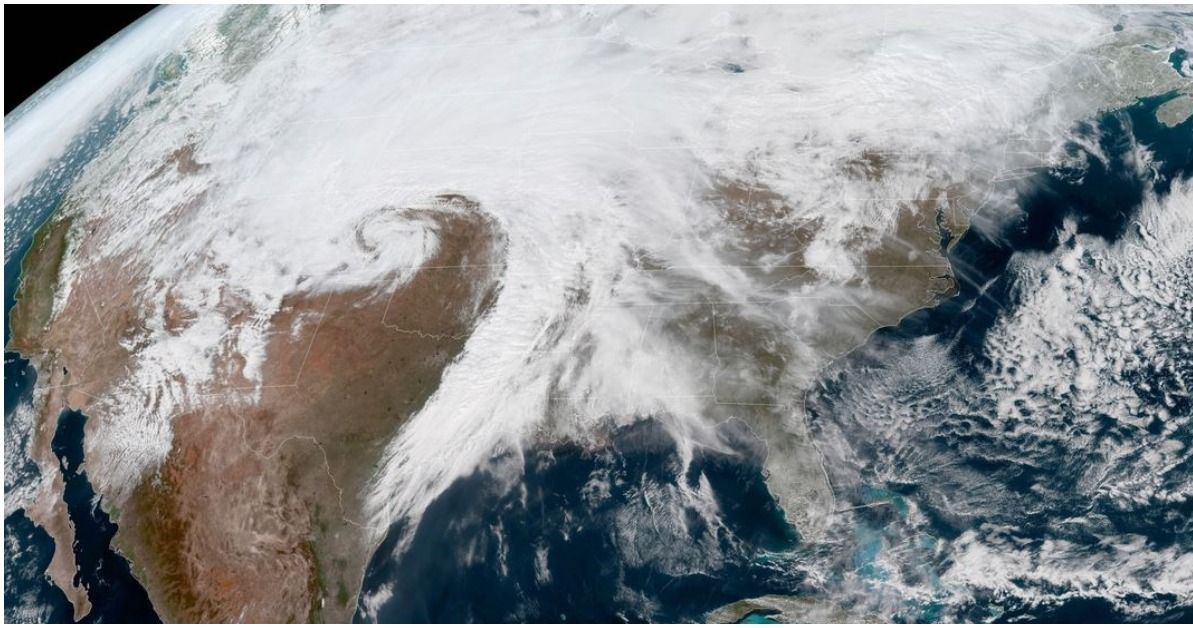If it feels like your city was just hit with an explosion of bad weather, you're not wrong.
The National Weather Service reports that the cold front traveling across the Midwest can officially be called a "bomb cyclone."
These storms occur when barometric pressure drops sharply within 24 hours, dramatically increasing a storm's power in a process called bombogenesis.
#GOESWest is keeping a close watch over the major storm system that's expected to bring blizzard conditions to much of the central and northern Plains region. Find updates on the storm here: https://t.co/pWnalUMfH1 pic.twitter.com/eJ0jPtiOJ1
— NOAA Satellites (@NOAASatellites) March 13, 2019
Weather experts compare such events to winter hurricanes, and winds from the current storm are blowing with the force of a Category 2 hurricane.
The storm has already set records for the lowest pressure recorded in Pueblo, Colorado, while whipping Dallas, Texas with gusts up to 78 miles per hour. Even stronger winds - up to 110 miles per hour - were predicted for West Texas and Southeast New Mexico.
Local reports from Colorado say the state at the center of the powerful storm could be in for its worst weather in recorded history.
Now at nearly whiteout conditions on 70, east of Denver. Half a dozen semis seemingly blown off the road on these few miles between Airpark and 470. pic.twitter.com/q9a5YiE9u3
— Elise Schmelzer (@EliseSchmelzer) March 13, 2019
While the U.S. interior is facing the brunt of the storm, more than 70 million people will feel its effects one way or another as severe weather warnings spread out over half the country.
Related weather dangers, like flooding, icy roads, and even tornadoes, are also a possibility as the storm gathers strength.
This is good preparation advice for the developing hazardous winter weather, high wind event, and severe weather potential this week. https://t.co/kkBfC4qAHw
— NWS (@NWS) March 13, 2019
Schools and state offices closed throughout several Midwest states on Wednesday, and it's possible they could stay closed at least through Thursday.
While you may think little of bad weather after this year's Polar Vortex, the last bomb cyclone to hit the U.S. caused multiple fatalities on the East Coast and left around 2 million people without power.
If you're in the storm's path, hunker down and stay safe!

